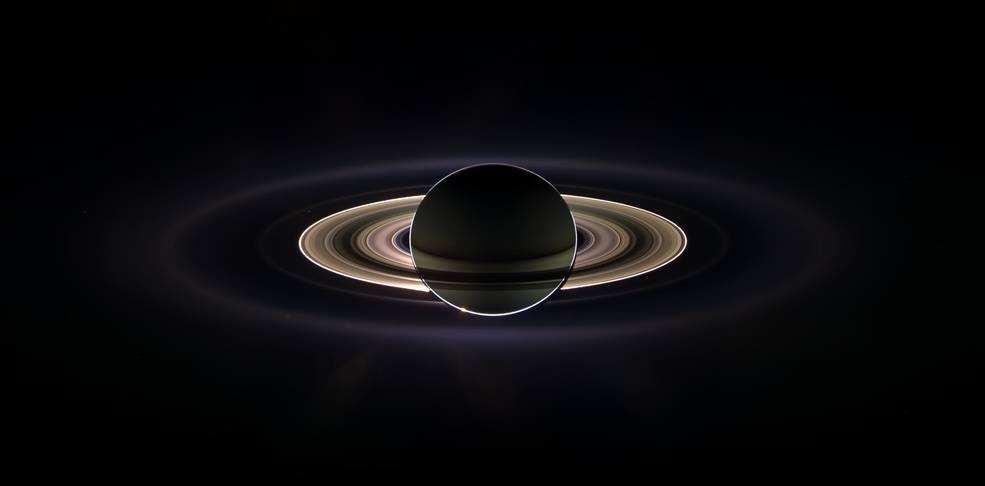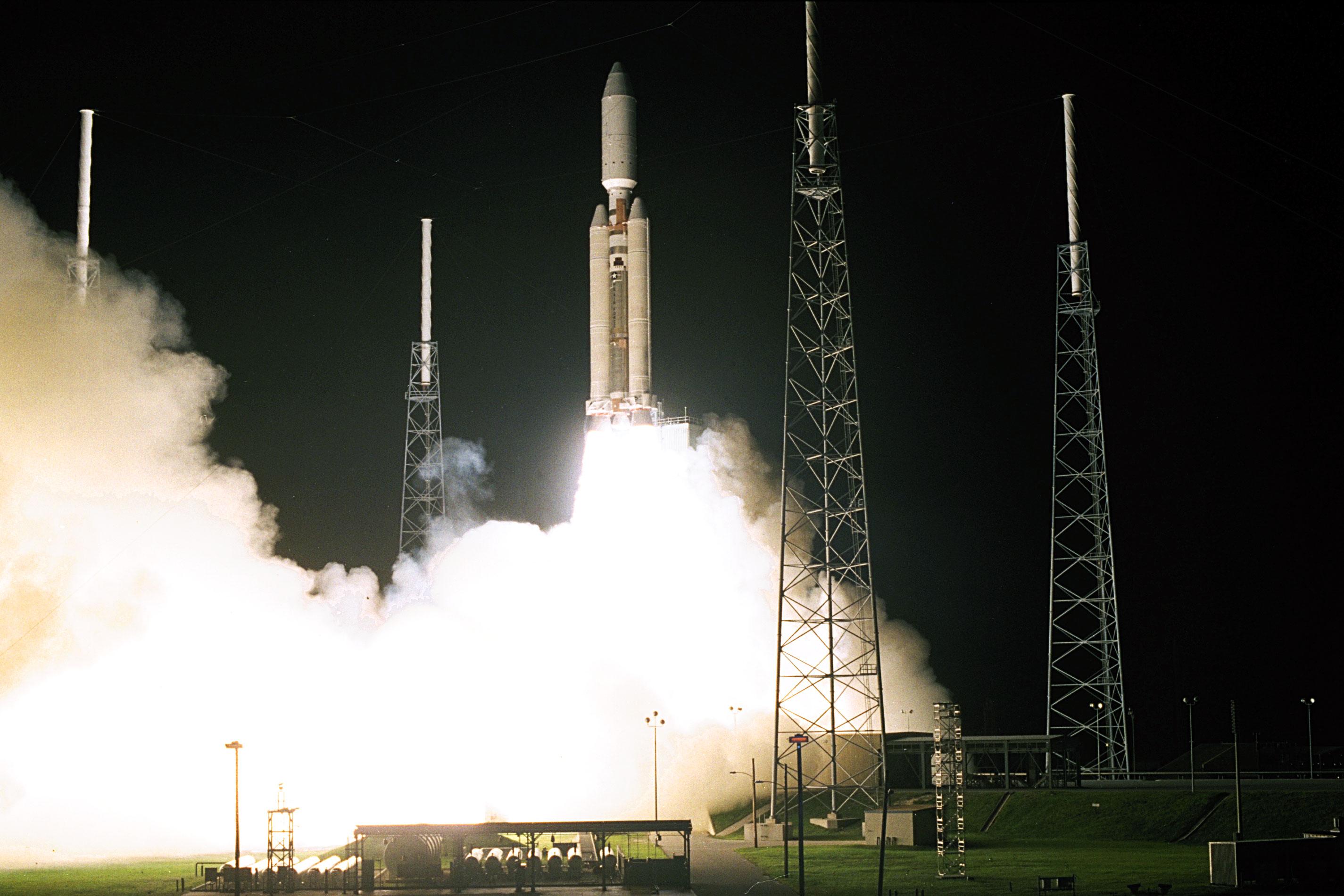
NASA's Cassini probe has now been circling Saturn for 13 years.
Cassini arrived in orbit around the ringed planet on the night of June 30, 2004 (July 1 GMT), after a nearly seven-year journey through deep space.
That trip, which kicked off with a launch atop a Titan IVB rocket on Oct. 15, 1997, covered a total of 2.2 billion miles (3.5 billion kilometers), NASA officials have said. The journey featured Venus flybys in April 1998 and June 1999, an Earth encounter in August 1999, and a Jupiter flyby in December 2000.
About six months after arriving in the Saturn system, the piggyback Huygens lander separated from the Cassini mothership and headed for Titan, the ringed planet's largest moon. On Jan. 14, 2015, Huygens pulled off the first-ever soft touchdown on a world in the outer solar system, then beamed home images of Titan's alien surface back to Earth via Cassini.
The orbiter, meanwhile, continued studying Saturn and its rings and moons, making a series of exciting discoveries. For example, Cassini detected lakes and seas of liquid hydrocarbons on Titan's surface and spotted geysers of water ice and other materials blasting from the southern reaches of another Saturn satellite, the ice-covered Enceladus.

Cassini's observations have allowed researchers to determine that this geyser water comes from a large subsurface ocean of liquid water, which may be capable of supporting life. (Titan may also be habitable, though the big moon's hydrocarbon-based weather system likely ensures that any life-forms there would be very different from Earth-based organisms, scientists have said.)
Cassini is now nearing the end of its long road. In April, the probe executed the first of 22 dives between Saturn's cloud tops and the planet's innermost ring. This "Grand Finale" phase will wrap up on Sept. 15, when Cassini will plunge into Saturn's thick atmosphere in a suicide maneuver designed to ensure that the probe doesn't contaminate Titan or Enceladus with microbes from Earth.
Get the Space.com Newsletter
Breaking space news, the latest updates on rocket launches, skywatching events and more!
The $3.2 billion Cassini-Huygens mission is a joint effort involving NASA, the European Space Agency and the Italian Space Agency.
Follow Mike Wall on Twitter @michaeldwall and Google+. Follow us @Spacedotcom, Facebook or Google+. Originally published on Space.com.
Join our Space Forums to keep talking space on the latest missions, night sky and more! And if you have a news tip, correction or comment, let us know at: community@space.com.

Michael Wall is a Senior Space Writer with Space.com and joined the team in 2010. He primarily covers exoplanets, spaceflight and military space, but has been known to dabble in the space art beat. His book about the search for alien life, "Out There," was published on Nov. 13, 2018. Before becoming a science writer, Michael worked as a herpetologist and wildlife biologist. He has a Ph.D. in evolutionary biology from the University of Sydney, Australia, a bachelor's degree from the University of Arizona, and a graduate certificate in science writing from the University of California, Santa Cruz. To find out what his latest project is, you can follow Michael on Twitter.









